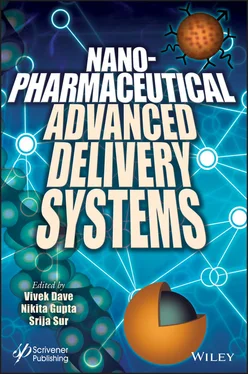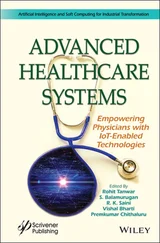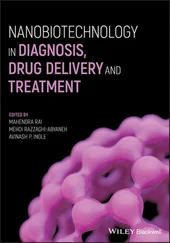Table 1.2 Differences between SMEDDS, SEDDS, and SNEDDS.
| S. No. |
Property |
SMEDDS |
SEDDS |
SNEDDS |
| 1. |
Size |
<250 nm |
>300 nm |
<100 nm |
| 2. |
Appearance |
Optically clear |
Turbid |
Optically clear |
| 3. |
Hydrophilic–lipophilic balance (HLB) value |
>12 |
<12 |
>12 |
| 4. |
Classification of lipid-based drug delivery system |
Type IIIB |
Type II |
Type IIIB |
| 5. |
Concentration of oil |
>20% |
40-80% |
>20% |
| 6. |
Concentration of surfactant |
40-80% |
30-40% |
40-80% |
| 7. |
Material |
Oil, surfactant, and co-solvents (both water soluble and insoluble excipients) |
Oil water insoluble surfactant |
Oils without surfactants (e.g., tri-, di-, and monoglycerides) |
| 8. |
Characteristics |
SMEDDS create with aqueous soluble elements |
SEDDS create without aqueous soluble elements |
Nondispersing requires digestion |
| 9. |
Advantages |
Clear dispersion, absorption of drug without digestion |
Improbable loss of solvent, capacity on dispersion |
Good solvent capacity for many drug formulations. |
| 10. |
Disadvantages |
Less easily digested |
Turbid o/w dispersion |
Poor solvent capacity until drug is lipophilic |
Cubosomes and hexosomes have generated great attention as they are the first to have molecular, multilevel, mesophasic, and nanoparticle observed structural compounds. They can be administrated through various routes thus providing versatility in the administration of various drugs. Internal structure defined before dispersion by liquid crystal mesophases of amphiphiles offers complex topologies; they can carry a higher volume of drug with long-term release [75]. Size ranges vary in the nanometer range, which allows similar surfactant to uniformly distribute and prevent aggregation. Since it possesses the curvature in the internal structure of crystalline mesophases, large volume of the drug can be loaded, which increases the potential for drug targeting [76, 77]. Due to the amphiphilic nature of liquid crystal forming lipid (polar head and lipophilic tail), they arrange themselves into a cubic or hexagonal phase, which is thermodynamically stable. Therapeutic applications of liquid crystal nanoparticles (cubosomes and hexagonal) are associated with the drug, route of delivery, formulation, and physiochemical properties such as increased molecular weight, the different polarity of drug molecule, compatibility issue, enzymatic degradation, and reduced toxicity.
1.4 Methods of Preparation of Lipid Nanocarriers
There are various high energy input and low energy input methods available for the preparation of lipid-based nanocarriers. The methods presented here include physical ones like homogenization and chemical ones like co-acervation. The choice of methods and energy input depends on the thermal stability of lipid molecules as well as drug molecule. Several important methods utilized for the preparation of lipid nanocarriers are given in Table 1.3.
1.5 Challenges and Hurdles
1.5.1 Scale Up and Stability Issues
The development of the lipid-based nanocarrier system can easily be scaled using the reported approach for preparation. Several issues of stability can, however, be associated with lipid carriers and can be a hurdle in the process of the scale-up. Polymorphism must first be taken into account. The colloidal size and particularly their high volume-to-surface ratio can result in the decrease in melting points. This effect may also be caused by impurities, agents, and stabilizers [86, 87]. For example, the co-acervation and hot homogenization method of fatty acids and triglycerides results in polymorphism [88]. Due to rapid solvent evaporation, polymorphic forms have been obtained during spray drying.
Table 1.3 Different types of techniques used in the preparation of lipid nanocarriers.
| Preparation techniques |
Description |
References |
| High-pressure homogenizationPressure: 100–2000 bar |
Hot homogenization |
Drug melted in hot lipid Pressure: 500–1500 bar Production of nanoemulsion |
[78, 79] |
| Cold homogenization |
Suitable for thermosensitive drug.Formulation rapidly cooled in dry ice. |
| Ultrasonication |
Probe ultrasonication |
Use for oral drug delivery systems.Diameter range: 80–800 nmReduce shear stress. |
[80] |
| Bath ultrasonication |
| Solvent emulsification–diffusion method |
Lipid dissolved in organic solvents (chloroform, ethyl acetate, methylene chloride, cyclohexane).Use for hydrophilic drug (w/o/w emulsion).Diameter range: 30–100 nm. |
[81] |
| Supercritical fluid method |
Lipophilic substances dissolved in organic solvent.Nanoparticle range 25 nm.Solvent removal by evaporation (pressure 40–60 mbar). |
[82] |
| Microemulsion-based method |
Two-phase system inner and outer (o/w microemulsion)Lower mechanical energy.Increased drug loading capacity, range of 200–250 nm. |
[82] |
| Spray drying method |
Use for lipid with melting point more than 70°C.Alternative technique to lyophilization process. |
[83] |
| Double emulsion method |
w/o/w two-step microemulsion technique.Drug is encapsulated with stabilizer to prevent leakage of drug. |
[82] |
| Precipitation technique |
Glycerides dissolved in an organic solvent.Solution is emulsified in aqueous phase. |
[84] |
| Film-ultrasound dispersion |
Form uniform size nanoparticles.Drug and lipid put in suitable organic solvent. |
[82, 85] |
Furthermore, sterilization is an important stability parameter in lipid nanocarrier system production [89]. Irradiation is an existing technique of sterilization for pharmaceuticals. However, during irradiation, the chemical degradation of the lipids can occur: therefore, ionizing radiation is not allowed, or at least more tests are required before it is accepted as a safe and effective technique of sterilization. Diverse studies have preferred an autoclave approach because it doesn’t change the Zeta potential and mean particle size, although this is paradoxical considering the effect that temperature may influence the stability of nanoparticles.
Another significant cause for instability is phase separation [88] because of the formation of reversible or irreversible particles (coalescence, sedimentation); also during storage, gelling may occur. Adequate surfactants can be used to address these problems: they can stabilize LNP suspension by an electrostatic repulsion, which improves Zeta potential, or they can serve as steric (non-ionic surfactants) stabilizers. Surface stability, particularly electrostatic stabilization and Zeta potential, is highly sensitive to pH and eventually exists at the external phase, which may cause suspension destabilization.
The acquisition of solid water forms is an effective strategy for overcoming the problems concerning lipid nanocarrier storage stability. This can be achieved through spray drying or lyophilization of suspension.
Читать дальше












